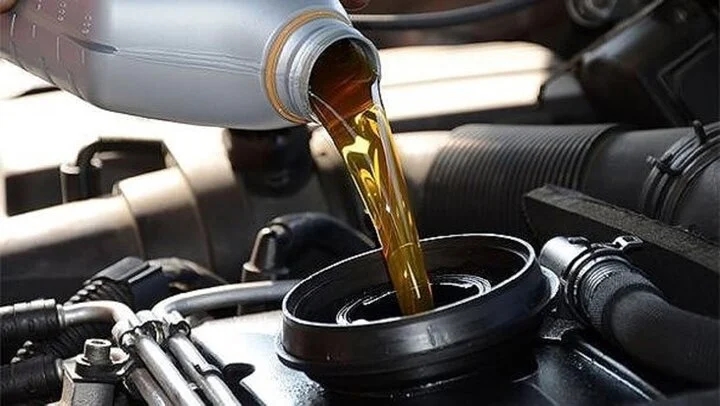It’s crucial to address warning lights as soon as they illuminate, as delaying action can severely impact engine performance.
How Does the Oil Light Work?
Oil lubricates the engine to reduce friction between internal components. The oil pressure sensor determines the engine oil pressure and sends this data to the ECU. The ECU then calculates the amount of oil in the engine, and if it’s low, the oil light illuminates. This sensor is prone to damage due to constant exposure to high oil temperatures.

The oil light indicates a potential issue with the oil. (Illustration)
The oil pressure light is connected to the oil pressure sensor, so a faulty sensor can send inaccurate information to the ECU. This misinformation can lead to the engine control system misinterpretation, resulting in the oil light turning on.
Fundamental Reasons for the Oil Light Illuminating
Low Oil Level
Insufficient oil lubricating the internal engine components is the primary cause of the oil light turning on. You can check the oil level using the built-in oil level check function in modern cars.
If the light comes on during operation, it indicates excessive oil consumption. This issue requires immediate attention as lubrication is critical for any engine. Neglecting it can lead to engine damage and compromise safety on the road.

Ensure you top up the oil to the appropriate level. (Illustration)
Contaminated Lubricating Oil
Another reason for the oil light to illuminate is contaminated oil in the engine. The sludge formed from degraded oil will be detected by sensors like the oil pressure sensor, triggering the oil light.
These dirt particles act as direct abrasives on the engine, causing it to run hotter and wear out faster. They also increase fuel consumption compared to a well-maintained engine.
Low Oil Pressure
Low oil pressure can be attributed to automotive oil that doesn’t meet the required standards. This could be due to using the wrong type of oil or a faulty oil pan.
Using the incorrect type of oil is common in regions with distinct hot and cold seasons. Higher temperatures require higher viscosity oil, while lower temperatures call for lower viscosity. For example, during the summer, an engine may use 10W-30 oil, but in winter, it should switch to 5W-30.
If the oil pan is damaged, the issue could be a malfunctioning pump unable to draw up the oil, or a clogged filter filled with dirt and sludge, blocking oil circulation. In such cases, drain the oil, remove the pan, and identify whether the issue lies with the pan or the pump to take appropriate corrective measures.
Faulty Pressure Sensor
Another cause of the oil light illuminating on the dashboard is a faulty sensor. Typically, the oil pressure sensor is attached to the engine block and is susceptible to damage from constant exposure to high temperatures and oil contaminants.
However, occasionally, the electrical circuit of the warning light on the dashboard may be at fault.
According to VTC News









